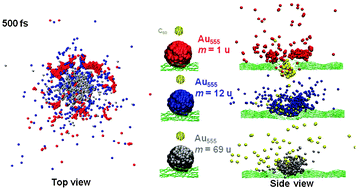Computer simulations of cluster impacts: effects of the atomic masses of the projectile and target
Abstract
Cluster

* Corresponding authors
a
Institute of Condensed Matter and Nanosciences, Université catholique de Louvain, Croix du Sud, 1 bte 3, B-1348 Louvain-la-Neuve, Belgium
E-mail:
ores77@gmail.com, arnaud.delcorte@uclouvain.be
Cluster

 Please wait while we load your content...
Something went wrong. Try again?
Please wait while we load your content...
Something went wrong. Try again?
O. A. Restrepo, X. Gonze, P. Bertrand and A. Delcorte, Phys. Chem. Chem. Phys., 2013, 15, 7621 DOI: 10.1039/C3CP50346A
To request permission to reproduce material from this article, please go to the Copyright Clearance Center request page.
If you are an author contributing to an RSC publication, you do not need to request permission provided correct acknowledgement is given.
If you are the author of this article, you do not need to request permission to reproduce figures and diagrams provided correct acknowledgement is given. If you want to reproduce the whole article in a third-party publication (excluding your thesis/dissertation for which permission is not required) please go to the Copyright Clearance Center request page.
Read more about how to correctly acknowledge RSC content.
 Fetching data from CrossRef.
Fetching data from CrossRef.
This may take some time to load.
Loading related content
